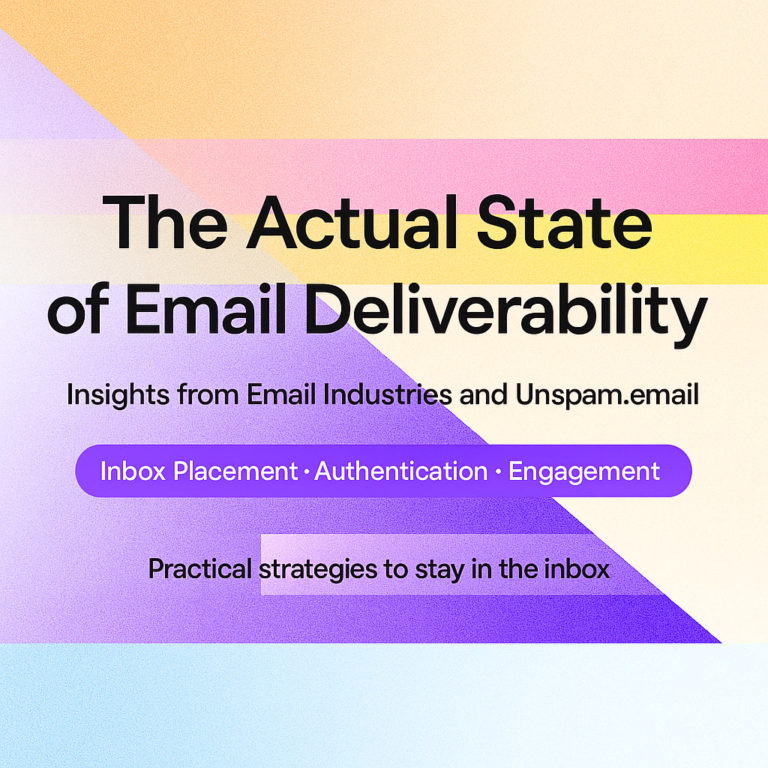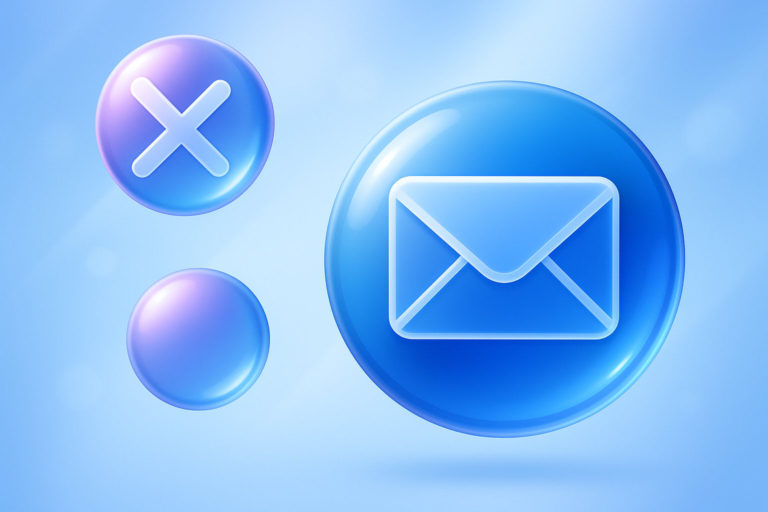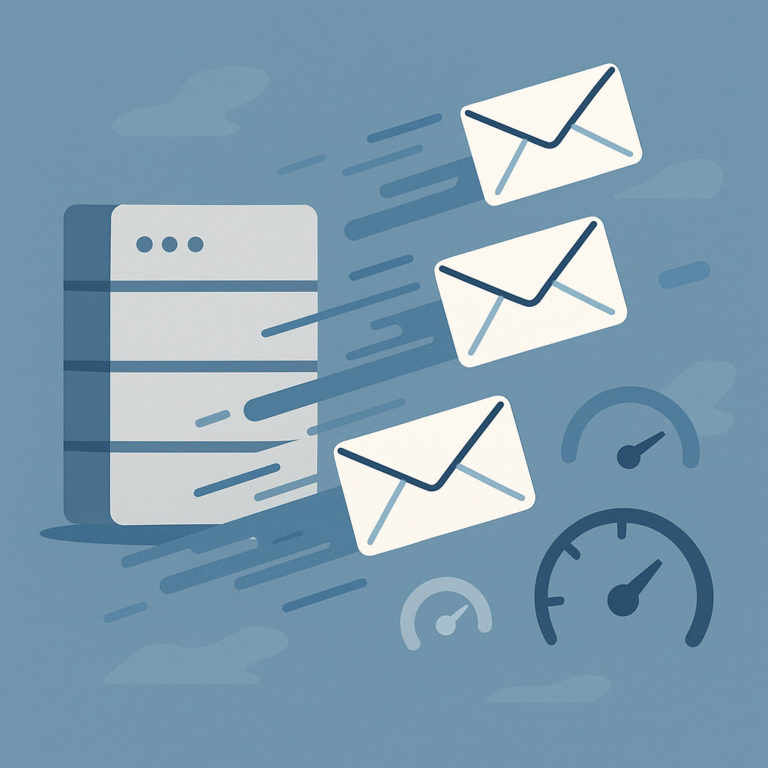Do you know that 85% of all emails are spam? According to Symantec, almost 9 out of 10 emails are not legitimate to reach the recipient. Counting that over 22 billion emails are sent daily, this is quite a vast number. According to studies, these malicious newsletters cost companies around $20.5 billion annually. Therefore, it is no surprise that instruments like spam traps and blacklists which help fight these harmful emails, are growing in popularity and becoming increasingly sophisticated.
While this is good news for recipients since their digital barriers are getting stronger and inboxes cleaner, unfortunately, it erects some substantial obstacles for email marketers. These tools may unintentionally block legitimate, nonspam emails, damaging email deliverability and ipso facto ruining campaigns.
So, what to do? To avoid spam traps and blacklists by creating newsletters that are deemed to be safe and secure for delivery, first and foremost, it is crucial to understand their nature. Afterward, it is highly advisable to adopt the best practices that help companies stay away from them. Let’s dive into this subject deeper.
Check Email Spam Traps
What are Email Spam Traps and Blacklists?
A spam trap known as a honeypot is just a regular email address. However, unlike others, it is used to bait spammers. It is powered with filters and sophisticated algorithms that let it efficiently analyze incoming email addresses to decide whether they are spam or not. Being regularly updated and revised, it efficiently identifies malicious emails and marks them as spam-sending sources.
There are several types of spam traps:
Pure or pristine spam traps
Created by ISPs and organizations that fight hackers and phishers, they are targeted at those who scrape the sites and harvest contacts in a suspicious manner. The administrator of the spam trap thoroughly analyzes the email address. As a rule, such addresses are marked as spam or blocked. However, these contacts can be closely tracked and monitored in some situations until other malicious behavior occurs.
Recycled spam traps
As the name has it, these email addresses used to be legitimate but were repurposed. Due to various reasons, they have now been turned into spam traps. Unlike pure honeypots, they are not so demanding and ipso facto damaging, but still, they may ruin the sender’s reputation over time.
Typo spam traps
These email addresses look legitimate at first sight; however, with close consideration, it becomes evident that they contain subtle typos. Much like recycled spam traps, they do not cause immediate damage. However, they may signal antispam authorities over time.
The impact of spam traps varies. For instance, a pristine spam trap affects a company’s sender’s score and reputation more severely than a recycled trap. Therefore, some companies face immediate consequences, while others suffer them later. However, whatever the situation is, it still damages the company.
What Are IP Blacklists?
Blacklists are regularly updated and revised lists of IP addresses allegedly engaging in unacceptable or unethical activities, like spam distribution. Blacklists help ISPs to determine what emails to block or route to the recipient’s folder, where the internal policy decides their fate.
Blocklist databases use spam filters to identify those emails. Spam traps also provide a huge help in identifying addresses of malicious or spammy nature. They are run and managed by companies specializing in cyber security. Spamhaus, SpamCop, Barracuda, and URIBL are the largest providers of bad IPs. On top of that, some large ISPs have their internal blacklists.
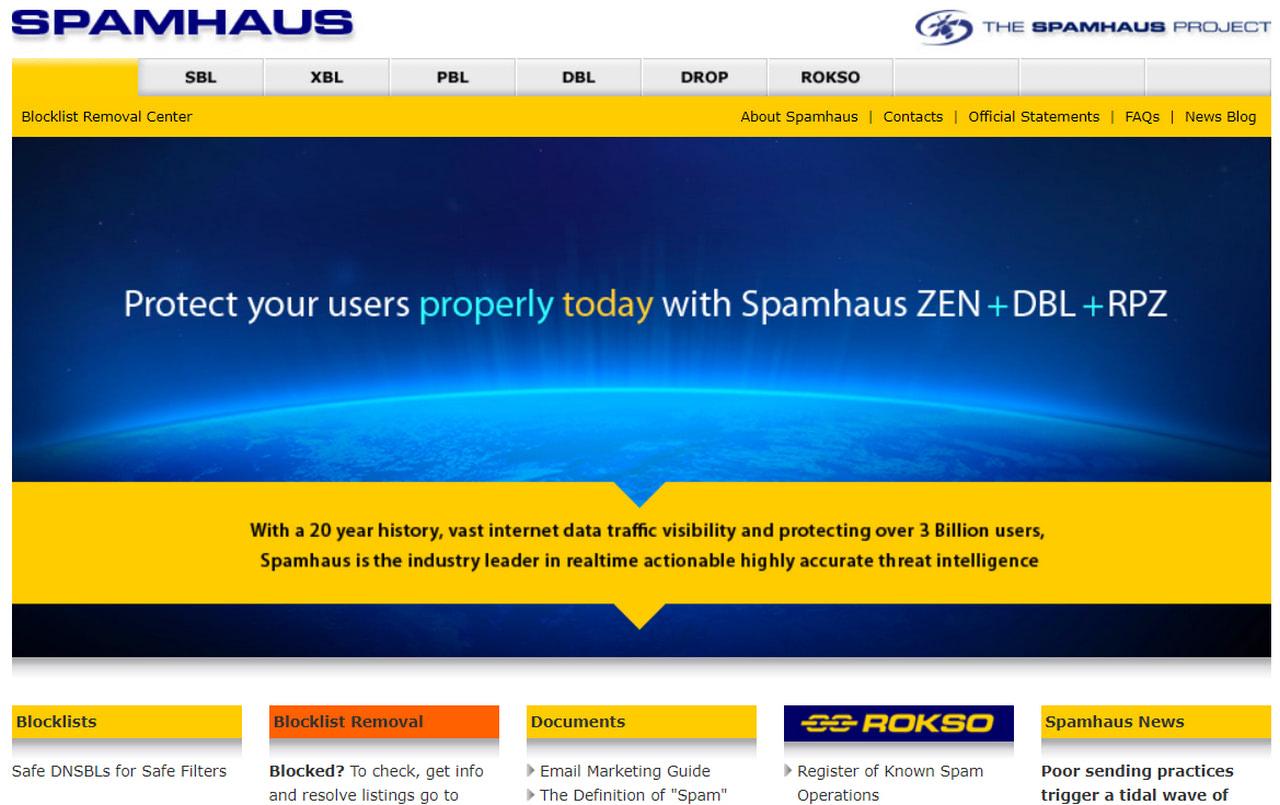
Spamhaus – The biggest provider of malicious IPs
Why Should You Avoid Spam Traps and Blacklists?
You might ask why I – not a spammer – and my hand-crafted digital newsletters should care about spam traps and blacklists? Like it or not, if you run email campaigns, it is your prime concern. There are many reasons for that.
First and foremost, spam traps may unintentionally mark you as spam due to algorithm imperfections.
Second, companies at an early stage may experience high soft rates and bounce rates that are spam signals.
Third, poor email marketing management may lead to spam traps.
Fourth, it is ridiculously easy to get into the spam folder. For instance, your email can be flagged as spam due to attachments or excessive use of graphics in the body copy. Companies that pump out a considerable quantity of mail also can be considered spam.
Fifth, Spamhaus, the most extensive blacklist on the web, blocks not just IP addresses but the entire mail server affecting all users. This means any mail originating from it will be blocked. You may suffer because of others.
Sixth, no one notifies the company about being blacklisted. You may put lots of money and human resources into your email marketing campaign but see no results simply because your company is blocked.
Finally, being marked as spam or blacklisted cause massive damage to the company:
- It can put your domain blacklisted forever.
- It does not allow the company to deliver its digital newsletter to its users.
- It decreases email deliverability.
- It ruins the sender’s score.
- It damages the company’s reputation.
- It generates wasted resources, including time, money, and human efforts.
- It revokes the privileges of using reliable ESPs.
- It nullifies email marketing achievements.
To make matters worse, it takes time to convince an ISP or organization that fights spammers to take you off the blacklist.
Therefore, if you want to move towards your goals, maintain a stellar reputation, and enjoy all the benefits of email marketing, you must avoid spam traps and blacklists.
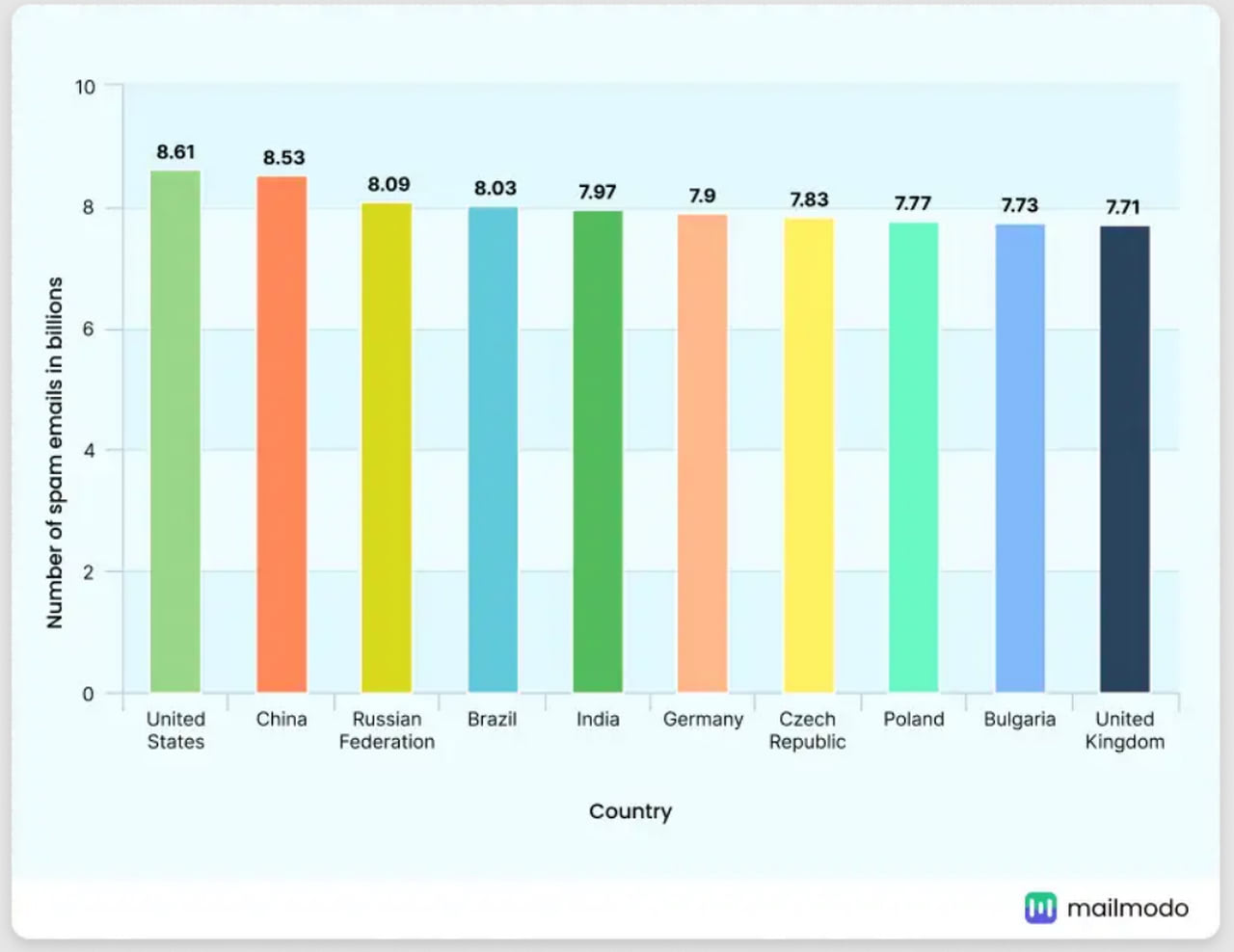
Email Spam Stats by Mailmodo
The Best Practices to Avoid Spam Traps and Blacklists
Before moving to the best practices to avoid spam traps and blacklists, you should accept that you might already have spam traps in your database or have been marked as spam once or twice by your beloved subscribers. The worst thing is you are not aware of it. This concerns everyone: even well-intentioned email marketers can get caught out.
What to do? Here are several things you can do to improve this situation and minimize your chances of getting blacklisted or flagged as spam.
- Stay away from shady email marketing practices. First and foremost – never buy contacts. Even though it sounds alluring to double or triple your list of subscribers at once, it may dramatically damage your progress in the long run because this is the most common way to end with spam traps. On top of that, some of those addresses can be old, inactive, or invalid. This may increase soft and hard bounces that badly impact deliverability, the sender’s score, and the company’s reputation.
- Do not do the scrapping. Some spam traps are created specifically for those who sift through websites and collect email addresses.
- Avoid offline tools to collect email addresses. Typographical errors happen all the time in paper forms. You risk ending up with invalid email addresses. Plus, it will take precious time to decipher handwriting and put everything correctly in the digital database.
- Do not make assumptions. If you do not know the exact email address of the company, do not go for the generic solution like info@, it can be wrong.
- Identify spam traps beforehand. The good news is every attentive user can do this because spam traps have some distinctive, abnormal features. For instance, if you have noticed one of these signs in your email address, pay particular attention to it:
- typos in the domain;
- typos in email provider;
- strange sequences of digits.
- Use professional email validation tools. They can be incorporated into subscription forms to ensure contacts provide legitimate addresses. Alternatively, you may use them to filter out an existing list to locate malicious instances.
- Practice double opt-in subscription forms. This way, you get onboard subscribers interested in your company and product. Plus, their email addresses will be checked against banal manual mistakes.
- Always ask for permission. Ideally, every type of email marketing campaign requires the user’s consent. This helps to build strong communication between customers and the company and provides a solid foundation for implementing an email marketing strategy.
- Remove addresses that cause a hard bounce rate or flag you as spam from your list.
- Create a well-thought-out routine for handling soft bounces.
- Place contacts who have been unsubscribed in a group for re-engagement campaigns or remove them from a list.
- Regularly check the email list to see if the addresses, particularly yours, are not on an email blocklist. As mentioned above, no one notifies you about getting on the blacklist; therefore, it is crucial to constantly revise yourself. Start with popular blocklist tools vendors like Barracuda Reputation Block List, SpamCop Blocking List, or Invaluement.com.
- Do regular cleaning of the subscription list. Analyze it using different filters and criteria. Locating contacts who have not engaged with your company for 3-6 months is crucial. Place them in another list to re-engage with unique email campaigns. On top of that, review the age of your subscribers. If they are old, they should be taken with caution because they can be abandoned and have been recycled as spam traps.
- Segment list. Identify contacts that are 100% not spam traps, and those most engaged with the company. Continue to narrow down the list by analyzing every subscriber to locate possible spam traps.
- Adopt the best practices for email development and marketing to build strong and healthy relationships with contacts. Welcome new users with onboarding sequences, nurture them with valuable email newsletters, and always listen to reactions to understand what works best for them, including time, frequency, content, and subject lines.
Last, but not least, ask for professional help. If you still see a decline in open rates, you may benefit from an expert team who will review and improve your sending and list management practices.
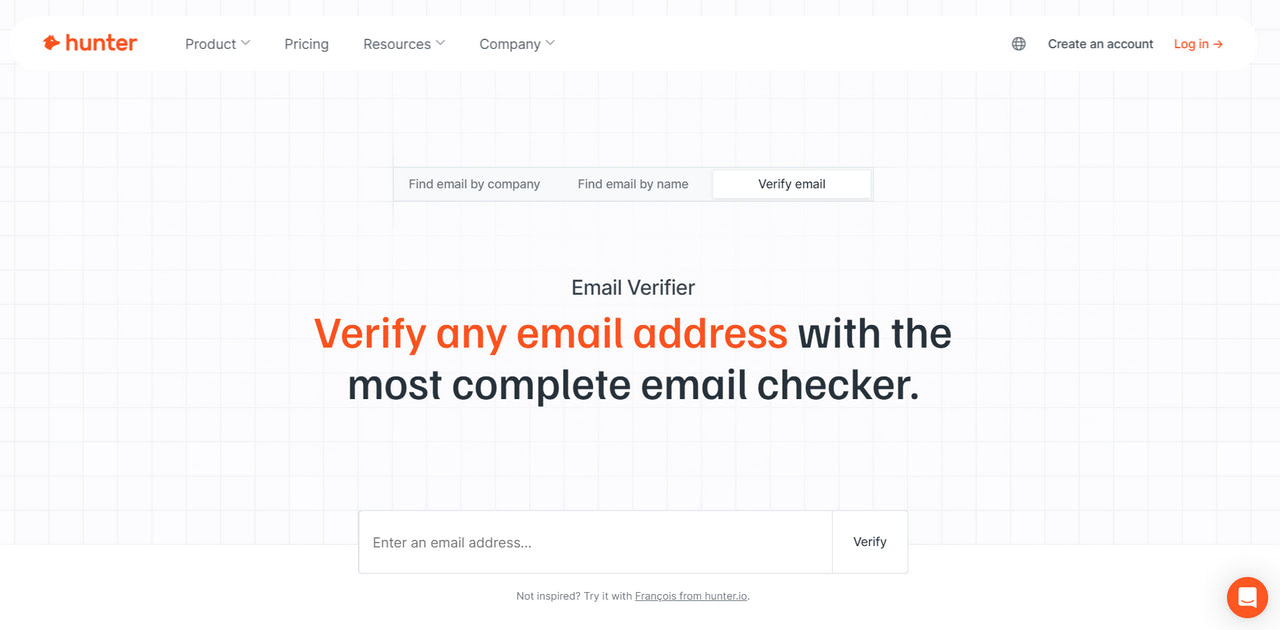
Conclusion
Email marketing is a strong player in your battle to win over customers and strengthen your company’s position in the market. It comes with numerous benefits; however, to enjoy them, it is crucial to maintain a healthy contact list and follow the best practices to avoid spam traps and blacklists. The latter should be your top concern because it is ridiculously easy to be flagged as spam or trapped by a honeypot.
Although one trap encounter cannot damage the sender’s score and the company’s reputation, it still requires caution. Without regular cleaning of the subscription list and practicing legal ways of acquiring new users, this amount will grow, and accordingly, your chances of being blacklisted by ISP and spam-fighting organizations.
If you end up in one of those blocklist databases, it will be challenging and time-consuming to clean a slate. You will see a decline in deliverability and open and click-through rates. On top of that, you start losing your privileges of using the best email providers. This brings massive damage to email marketing and may even nullify your progress. Therefore, avoid spam traps and blacklists at any cost.


